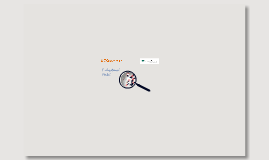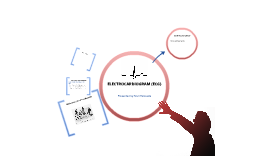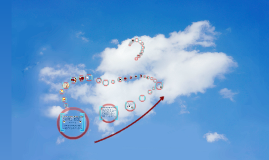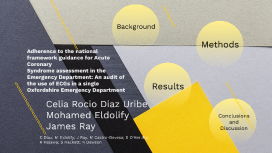ECG
Transcript: ELECTRICAL CELLS pacemaker cells automaticity and conductivity generation and conduction of electrical impulses CARDIAC CELLS II (+) electrode V6 25 sm The limb electrodes RA - On the right arm, avoiding thick muscle LA – On the left arm this time. RL - On the right leg, lateral calf muscle LL- On the left leg this time. LL 5 Presented by: EMERGENCY ROOM DEPARTMENT Iligan Medical Center Hospital San Miguel Village, Pala-o, Iligan City Location: Right atrial wall inferior to the opening of SVC Function: Dominant pacemaker Physiologic heart rate Inherent rate: 60-100 beats/minute LEADS V1,V2,V3,V4,V5,V6 THEY ARE PLACED DIRECTLY ON THE CHEST. BECAUSE OF THEIR CLOSE PROXIMITY OF THE HEART, THEY DO NOT REQUIRE AUGMENTATION. Inferior to be continued... 25 sm HOW TO DO ELECTROCARDIOGRAPHY Sinus Node Standard Limb Leads Surface viewed Inferior 0.20s 1 The 6 chest electrodes V1 - Fourth intercostal space, right sternal border. V2 - Fourth intercostal space, left sternal border. V3 - Midway between V2 and V4. V4 - Fifth intercostal space, left midclavicular line. V5 - Level with V4, left anterior axillary line. V6 - Level with V4, left mid axillary line. The Electrocardiogram Analyzing a Rhythm Strip Atrial depolarization ANALYZING A RHYTHM STRIP Lead Left leg 1 The Electrical Conduction System Regularly Irregular V3 Right and Left (-) electrode Left arm Irregularly Irregular The Different Views Reflect The Angles At Which LEADS "LOOK" At The Heart And The Direction Of The Heart's Electrical Depolarization. Contraction of atria - P wave Ventricular depolarization - QRS complex Ventricular repolarization - T wave The ECG 12-lead system LA aVR aVL aVR aVF aVL LL Lateral RL V5 Note: Place the sensors on a smooth fleshy area of the upper arms and lower legs. Attach the limb leads. Left arm AV Node Assess the Rhythm 0.04 25 sm Left leg 25 sm MYOCARDIAL CELLS working cells mechanical cells contractility contraction and relaxation 4 Location: Interventricular septum Inherent rate: 20-40 beats/min Escape pacemaker 2 Records the hearts electrical activity The diagnostic tool of choice in order to investigate cardiac arrhythmias in most patients noninvasive and readily available THE SHAPE OF ECG V2 Time II 1 Record of electrical activity between 2 electrodes Has a negative (-) and positive (+) pole Types: 1. Standard limb leads 2. Augmented leads 3. Precordial leads (chest leads) 1. Place the patient in a supine or semi-Fowler's position. If the patient cannot tolerate being flat, you can do the ECG in a more upright position. 2. Instruct the patient to place their arms down by their side and to relax their shoulders. 3. Make sure the patient's legs are uncrossed. 4. Remove any electrical devices, such as cell phones, away from the patient as they may interfere with the machine. 5. If necessary shave the electrode areas before cleaning the exposed skin with alcohol for proper electrode adhesion. 6. If you're getting artifact in the limb leads, try having the patient sit on top of their hands. Causes of artifact: patient movement, loose/defective electrodes/apparatus, improper grounding. RA Sino-Atrial Node The electrocardiogram (ECG) is a representation of the electrical events of the cardiac cycle. Each event has a distinctive waveform the study of waveform can lead to greater insight into a patient’s cardiac pathophysiology. Bundle Branches (right and left) ECG Paper PRECORDIAL LEADS AV Junction 1 1 small square = 0.04 sec = 1 mm = 0.1 mV 1 big square = 0.2 sec 5 big squares = 1 sec 300 big squares = 1 min Ventricular Muscle CARDIAC CELLS These leads help to determine heart’s electrical axis. The limb leads and the augmented limb leads form the frontal plane. The precordial leads form the horizontal plane. Surface viewed Bundle of His What is an ECG? III Right arm Network of conducting strands beneath the ventricular myocardium Inherent rate: 20-40 beats/min Escape pacemaker Provides information about: Orientation of the heart in the chest Conduction disturbances Electrical effects of medications and electrolytes Presence of ischemic changes The ECG Waveforms BASIC ECG 1 Left arm I Learning Objectives (+) electrode RA Inferior The Electrocardiogram Left leg Assess the Rhythm V4 Atrioventricular node Lead The ECG Waveforms III Purkinje Fibers 3 V1 Voltage 25 sm Sino-atrial node 1mm or 0.1mV Rate, Rhythm and Waveforms aVF Right arm Define ECG and its importance Familiarize the Anatomy and Mechanism of Heart and its Conduction system Define terms related to ECG Demonstrate the proper ECG procedure and its Nursing Considerations Identify basic steps in analyzing a rhythm Identify common rhythm disturbances. Placement of electrodes Ventricular repolarization Augmented Leads The ECG and the 12-lead system Ventricular depolarization ANALYZING A RHYTHM STRIP LA Bundle of His Assess the Rhythm Measure the distance between 2 consecutive R-R intervals and compare that distance with the other R-R intervals PACEMAKERS OF THE HEART

















